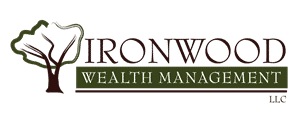Retirement planning regulations are always evolving, and staying up to date with these legislative changes is essential for securing your financial future. Some significant upcoming shifts include the SECURE 2.0 Act, which will introduce new provisions in 2025 and, with it, new opportunities and considerations. Here’s what you need to know about the changes.
What’s Changing from 2024 to 2025?
While initially enacted in 2022, SECURE 2.0 modifications are still being implemented as we head into the 2025 tax year. Notable changes include:
Increased Catch-Up Contributions
One of the most anticipated updates in SECURE 2.0 is the large catch-up contribution increase for individuals aged 60 to 63. If you fall in this age group, starting in 2025, the cap on 401(k) catch-up contributions will go up to $11,250.
This increase provides a crucial opportunity for those approaching retirement to maximize their contributions during what are often their final salary-earning years. It’s especially beneficial for those who may have started saving later in their careers or who need to make up for gaps in their retirement savings. By leveraging this provision, individuals can better prepare for upcoming retirement expenses, including healthcare, travel, and unforeseen financial needs.
For individuals aged 50 and older, the existing catch-up contribution limit for 401(k) plans will continue to apply in 2025, allowing them to contribute an additional $7,500 above the standard contribution limit. Contributions to traditional or Roth IRA accounts remain capped at $7,000 annually, with the catch-up contribution for those over 50 staying at $1,000.
Automatic Enrollment & Escalation
Starting in 2025, new 401(k) and 403(b) plans in the private sector will be required to automatically enroll employees and begin with a contribution rate of at least 3%. This rate must then automatically escalate annually by 1% until it reaches at least 10%, but not exceeding 15%.
The goal of this policy is to increase participation and overall savings rates, ensuring that more employees are actively contributing to their retirement funds without needing to take the initial step themselves.
Long-Term Part-Time (LTPT) Worker Eligibility
The original SECURE Act allowed long-term part-time workers to participate in 401(k) employer retirement plans, but SECURE 2.0 modifies this provision. Starting in 2025, employees only need to complete two — rather than three — consecutive years with a minimum of 500 service hours during each.
However, while the eligibility criteria have been relaxed, employer matching is still not required. Companies must allow LTPT employees to participate in the plan, but they don’t need to make matching contributions.
Retirement Savings Lost & Found
SECURE 2.0 requires the Department of Labor (DOL) to establish a national online retirement plan lost and found database, to which plan administrators will need to share information starting in 2025. With more people changing jobs frequently, retirement savings can become scattered, making it easy to lose track of funds. The database will serve as a centralized resource, ensuring that individuals can quickly and efficiently locate their savings and consolidate their retirement accounts.
Ongoing Provisions
Several provisions already introduced under the original SECURE 2.0 Act remain beneficial and will continue to support individuals and families across the country.
Hardship Withdrawals: The Act simplified the process for taking hardship withdrawals by allowing individuals to self-certify their eligibility. This provision reduces administrative hurdles and gives workers more flexibility to access their savings in times of need without complex paperwork.
Emergency Savings: SECURE 2.0 introduced provisions allowing employers to establish emergency savings accounts linked to retirement plans, often called “sidecar” accounts. These accounts enable employees to contribute after-tax dollars to Roth accounts, with a cap of $2,500.
Make the Most of SECURE 2.0 in 2025
SECURE 2.0 continues to bring significant changes that can impact your retirement strategy. At Ironwood Wealth Management, our financial planning experts are here to help you navigate these updates and take full advantage of new benefits. Schedule a free consultation, and let’s discuss strategies that keep your strategy aligned with the latest provisions.

